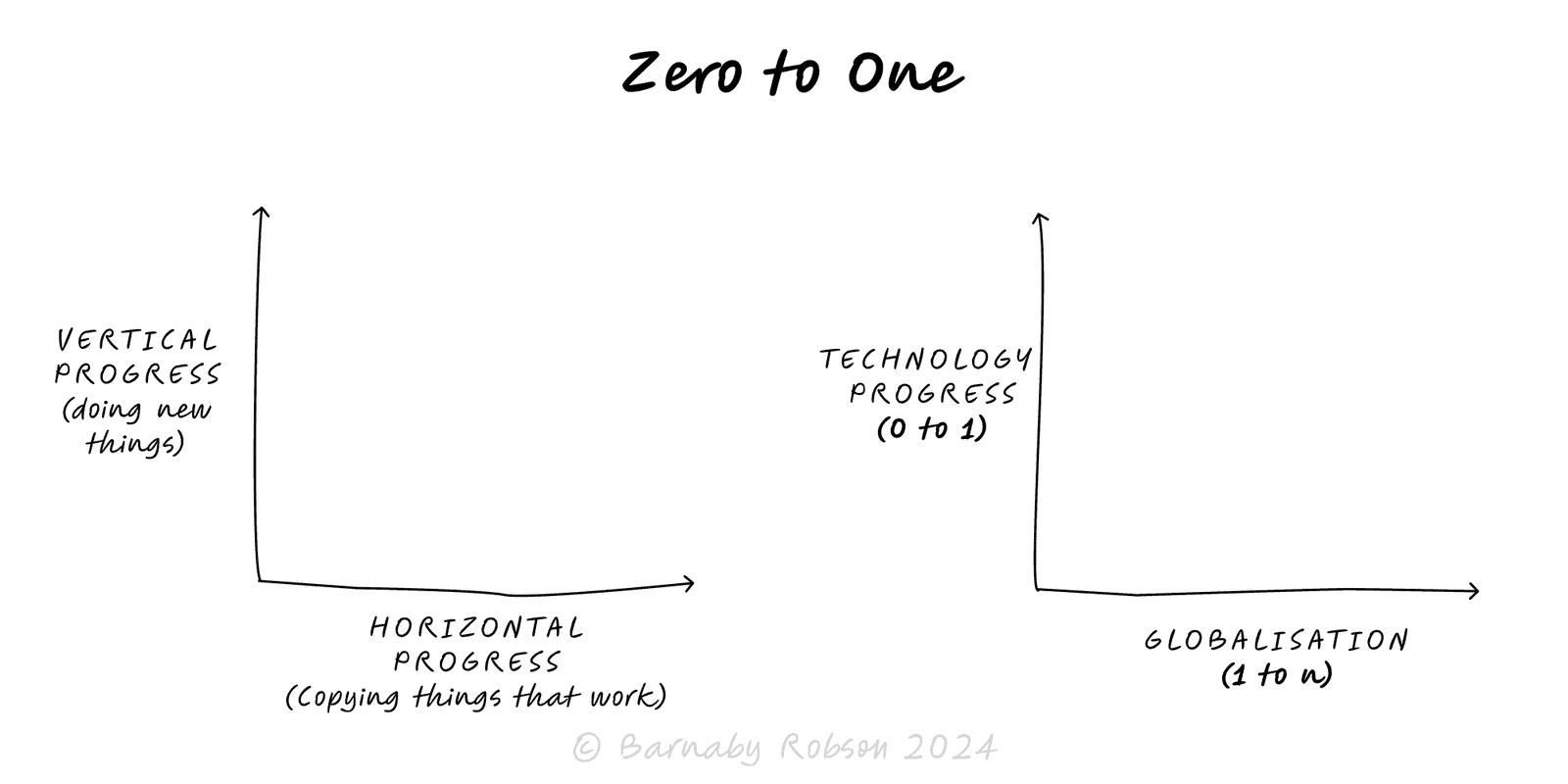Zero to One
Peter Thiel (with Blake Masters), Zero to One (2014)

“Zero to One” contrasts incremental copying with novel creation. Thiel’s core claim: enduring tech businesses are monopolies by design—they discover a secret, build a 10× advantage, and defend it with strong moats (network effects, scale, proprietary tech, brand, or regulation). Success follows a power law—a few bets drive most returns—so choose markets and problems where you can become the definitive provider.
I discuss the Zero to One concept in my essay here: https://barnabyrobson.org/the-future-of-progress/
Vertical vs horizontal progress – invent new ways to do things vs replicate existing ones.
Contrarian question – “What important truth do very few people agree with you on?” → your secret.
Start with a niche – dominate a small market first, then expand adjacently.
10× product – be an order of magnitude better on what the market values.
Moats – defend with network effects, economies of scale, proprietary data/tech, switching costs, or brand.
Distribution matters – plan sales/marketing channels as deliberately as product.
Last-mover advantage – aim to be the one that endures, not just the first to ship.
Power law – expect outcomes to be skewed; concentrate talent and capital on the outlier.
Startup selection and strategy – pick problems with monopoly potential.
Corporate innovation – carve out “new category” bets rather than me-too features.
Product roadmaps – prioritise 10× wedges over broad, shallow parity.
Write your contrarian thesis – the overlooked truth about your market or user.
Define the atomic niche – smallest segment you can plausibly own within 12–24 months.
Specify the 10× edge – speed, cost, accuracy, convenience, or delight (show proofs/benchmarks).
Choose your moat(s) – which 2–3 isolating mechanisms will strengthen as you grow?
Design distribution – direct sales, product-led growth, partnerships, platform plays; target CAC payback.
Stage expansion – adjacency plan once you hold 60–80 percent of the first niche.
Allocate by power law – double down on what’s working; kill the rest quickly.
Set durability tests – retention, unit economics, moat health (e.g., % usage from network effects).
“First” without staying power – speed ≠ advantage; durability beats novelty.
Me-too in big markets – competing head-on where you can’t be 10× better.
Tech without go-to-market – distribution neglected until it’s too late.
Fake moats – PR, patents with no teeth, or easily copied UX.
Contrarian theatre – being different for its own sake; insist on true user value.
Regulatory cliffs – some monopolies invite scrutiny; design compliance early.